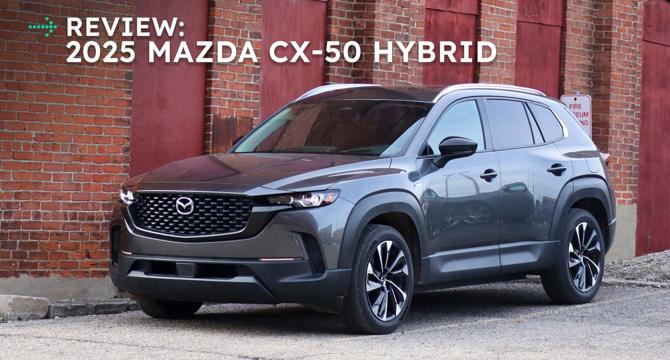Insideevs
6d
139

Image Credit: Insideevs
Mazda CX-50 Hybrid: If You Can’t Beat Em, Join Em, Right?
- Mazda has historically been an underrated brand in the automotive industry, known for reliable and well-designed vehicles but lagging in powertrain development and electrification efforts.
- The introduction of the Mazda CX-50 hybrid signifies a shift towards electrification for the brand, borrowing Toyota's hybrid system for this compact crossover model.
- The CX-50 hybrid uses the same hybrid system as the Toyota RAV4 hybrid, with Mazda's engineers working on differentiation to provide a unique driving experience aligned with Mazda's ethos.
- While the CX-50's hybrid system is borrowed from Toyota, efforts have been made to enhance its Mazda-like characteristics, including noise, vibration, and harshness tuning.
- Driving the CX-50 hybrid offers a smooth and responsive experience, with well-resolved handling dynamics, making it a fun-to-drive hybrid crossover in its price range.
- Despite slightly lower observed fuel efficiency compared to EPA ratings, the CX-50 hybrid still promises lower emissions and fuel consumption than its gas-powered counterparts.
- Priced competitively, the CX-50 hybrid appeals to Mazda enthusiasts looking for a compact hybrid crossover that offers a blend of performance, efficiency, and Mazda's driving characteristics.
- The CX-50 hybrid challenges the notion that shared powertrains result in identical feeling cars, showcasing differentiation despite utilizing similar components as the Toyota RAV4 hybrid.
- As the automotive industry transitions towards electrification, the CX-50 hybrid serves as an important vehicle in offering a unique driving experience within the compact hybrid crossover segment.
- The implementation of a shared hybrid system in the CX-50 and the Toyota RAV4 demonstrates that vehicles can utilize common technology while maintaining distinct brand identities.
Read Full Article
8 Likes
For uninterrupted reading, download the app